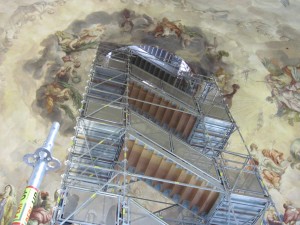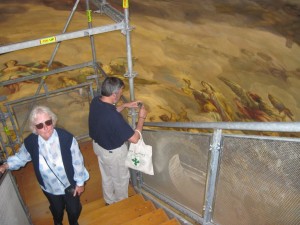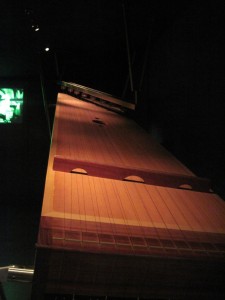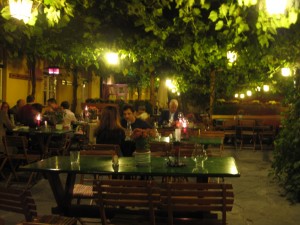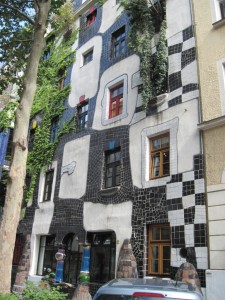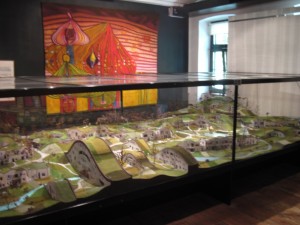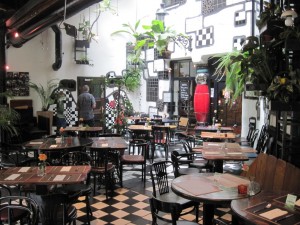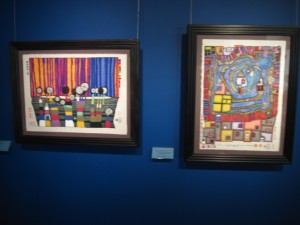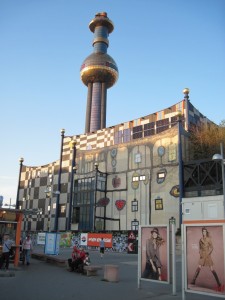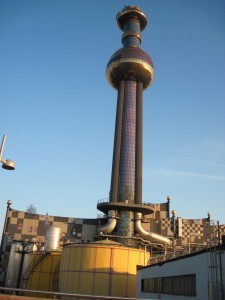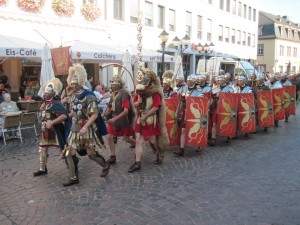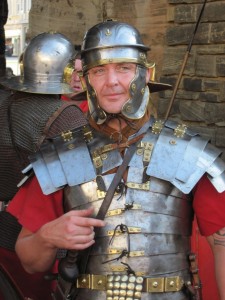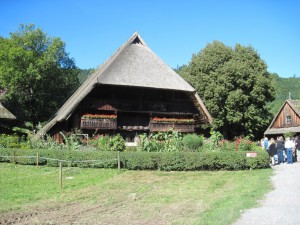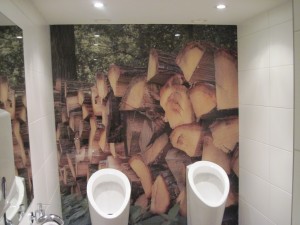 Angkor Wat is Southeast Asia’s most famous and evocative archeological site. Built by the Khmer rulers between the 9th and 13th centuries, the temples of the Angkor Archeological Park represent one of the world’s great architectural achievements. The 100+ stone temples one sees today are but the survivors of a colossal city whose palaces and houses, built of wood, are long gone. The complex once incorporated almost 400 square miles, making it by far the largest preindustrial metropolis in the world. Khmer power stretched across most of Southeast Asia and each succeeding ruler built a temple or monastery to enhance his legacy. Strictly speaking, Angkor Wat is but the crown jewel of the site, built by Suyavarman II in 1150.
Angkor Wat is Southeast Asia’s most famous and evocative archeological site. Built by the Khmer rulers between the 9th and 13th centuries, the temples of the Angkor Archeological Park represent one of the world’s great architectural achievements. The 100+ stone temples one sees today are but the survivors of a colossal city whose palaces and houses, built of wood, are long gone. The complex once incorporated almost 400 square miles, making it by far the largest preindustrial metropolis in the world. Khmer power stretched across most of Southeast Asia and each succeeding ruler built a temple or monastery to enhance his legacy. Strictly speaking, Angkor Wat is but the crown jewel of the site, built by Suyavarman II in 1150.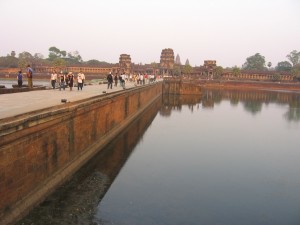 Dedicated as a personal mausoleum and state temple, Angkor Wat stretches nearly one half mile on each side of its outer walls making it the world’s largest religious building. The temple was dedicated to Vishnu and is a representation of Hindu cosmology. The soaring, corncob-like towers of the central structure represent sacred Mt. Meru. The series of walls and moats that surround it are symbolic of mountain ranges and cosmic ocean respectively. Galleries are decorated with friezes of Hindu mythological epics and the temple is decorated with bas-relief sculptures of Apsuras, (heavenly maidens) and devatas (guardian spirits).
Dedicated as a personal mausoleum and state temple, Angkor Wat stretches nearly one half mile on each side of its outer walls making it the world’s largest religious building. The temple was dedicated to Vishnu and is a representation of Hindu cosmology. The soaring, corncob-like towers of the central structure represent sacred Mt. Meru. The series of walls and moats that surround it are symbolic of mountain ranges and cosmic ocean respectively. Galleries are decorated with friezes of Hindu mythological epics and the temple is decorated with bas-relief sculptures of Apsuras, (heavenly maidens) and devatas (guardian spirits).
But Angkor Wat proper is just the tip of the Angkor iceberg. Angkor Thom is a walled city built by Jayavarman VII late in the 12th century and constitutes the pinnacle of Khmer power and influence. Highlights of Angkor Thom include the beautifully proportioned Bayon temple and the famous Terrace of Lepers and Terrace of Elephants. The entire city if surrounded by a great wall, each side of which is pierced by a massive, sculpted gate, decorated by bas-reliefs of four faces, each facing one of the cardinal points of the compass. Jayavarman also built Ta Prohm and Preah Khan. Ta Prohm is considered by many visitors to be Angkor’s most evocative sight. During Angkor’s restoration in the 19th century, archeologists chose to leave several temples in the condition found. In other words, overtaken by the Cambodian jungle. Giant and strangler figs dominate the compound with their massive root systems in, on, and through the stone temples, walls, and doorways. Another worthwhile temple is Banteay Sri, a smaller outlying temple from the 10th century with exquisite, detailed carving. On Imprint Tours’ Angkor extension (of the Tantalizing Thailand tour) we spend 2 ½ full days exploring the site. In addition to visiting all of the above-mentioned sights we also enjoy sunrise at Angkor Wat and sunset within the park.
Highlights of Angkor Thom include the beautifully proportioned Bayon temple and the famous Terrace of Lepers and Terrace of Elephants. The entire city if surrounded by a great wall, each side of which is pierced by a massive, sculpted gate, decorated by bas-reliefs of four faces, each facing one of the cardinal points of the compass. Jayavarman also built Ta Prohm and Preah Khan. Ta Prohm is considered by many visitors to be Angkor’s most evocative sight. During Angkor’s restoration in the 19th century, archeologists chose to leave several temples in the condition found. In other words, overtaken by the Cambodian jungle. Giant and strangler figs dominate the compound with their massive root systems in, on, and through the stone temples, walls, and doorways. Another worthwhile temple is Banteay Sri, a smaller outlying temple from the 10th century with exquisite, detailed carving. On Imprint Tours’ Angkor extension (of the Tantalizing Thailand tour) we spend 2 ½ full days exploring the site. In addition to visiting all of the above-mentioned sights we also enjoy sunrise at Angkor Wat and sunset within the park.
Angkor’s decline is usually attributed to Siamese invasions in the early 15th century. By the end of the century Angkor had been abandoned. But even before the Siamese Angkor was in decline. Some scholars have suggested the conversion to Buddhism during the reign of Jayavarman VII contributed to that slide. Buddhism’s denial of the ultimate reality of the individual undermined the personality cult of Khmer royalty (devaraja) which had inspired the grandiose buildings of Angkor. The weakening of royal prestige combined with the drains of warfare to erode the ability to maintain crucial public works. Most notable was the construction and maintenance of waterways for irrigation. Therefore Angkor was unable to feed its citizens and the civilization declined. Others have suggested that natural disasters such as earthquakes, floods, droughts, or climate change also contributed to its decline.
Angkor was discovered by westerners in the late 19th century. From 1907 to 1970 the French conducted a restoration project, liberating Angkor’s temples from the encroaching jungle. Work resumed after the end of the Cambodian civil war and the entire area is a World Heritage site. I know I'm always singing the praises of sights we visit on Imprint tours, but Angkor is truly one of the wonders of the world and should be on everyone's travel bucket list.


